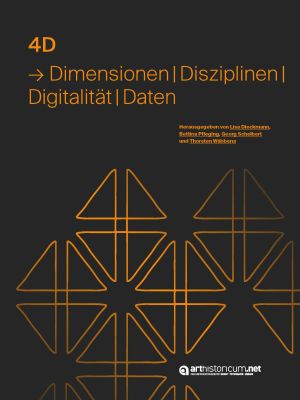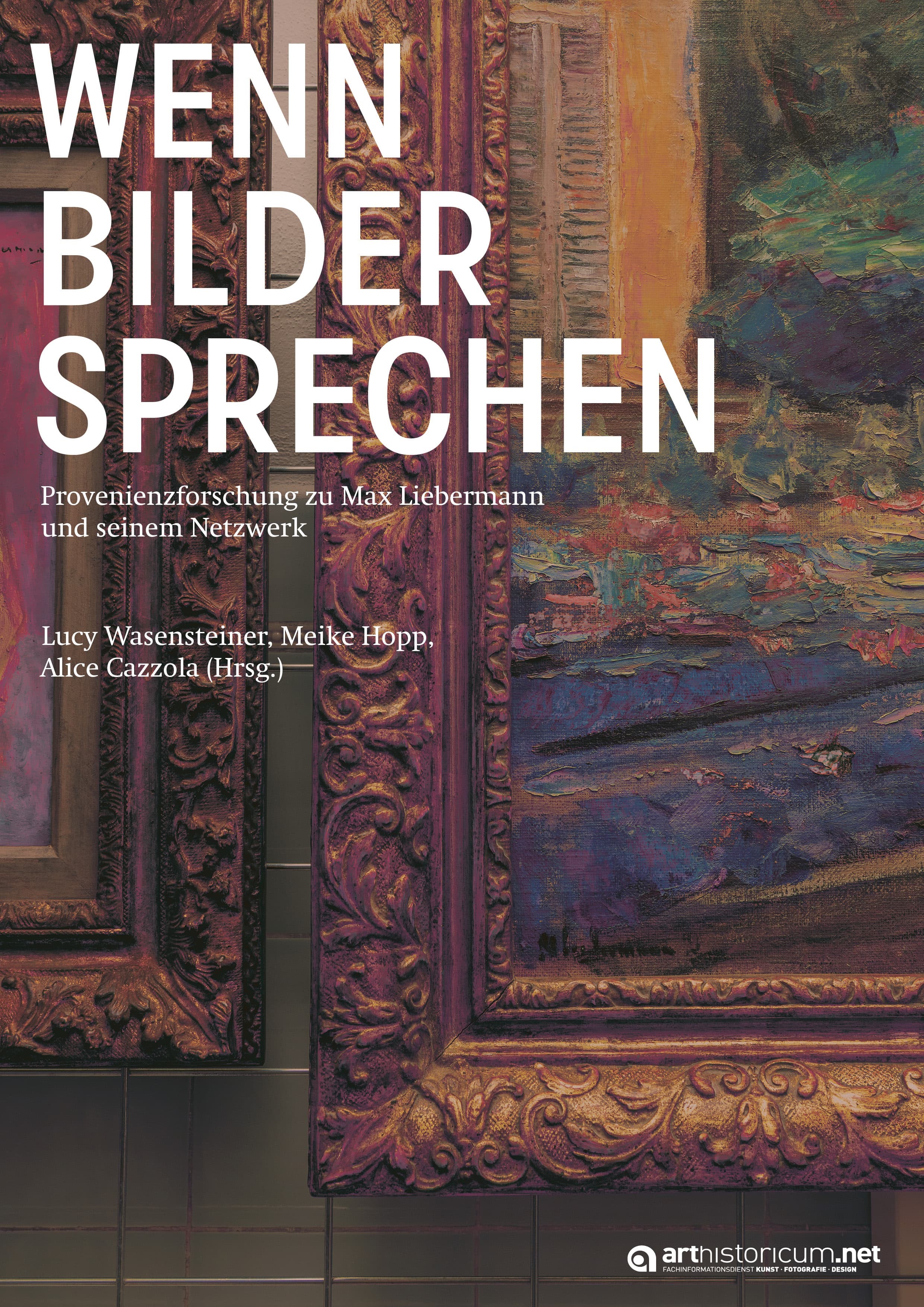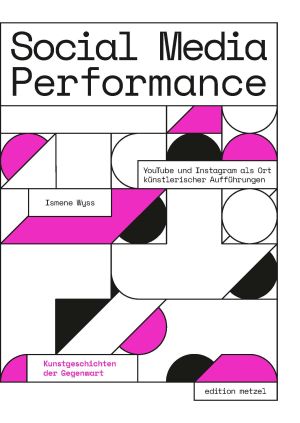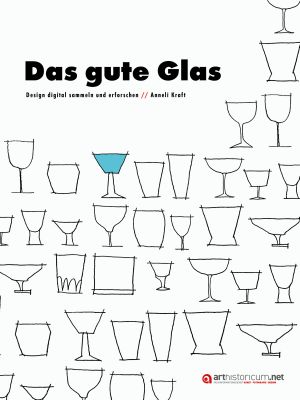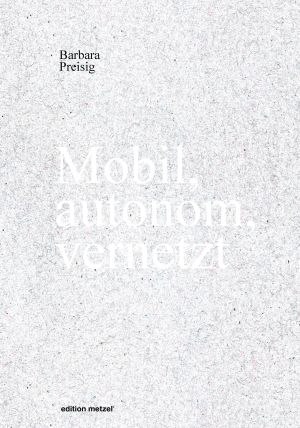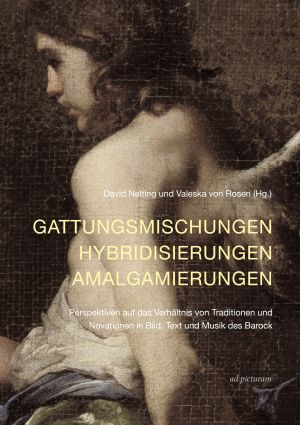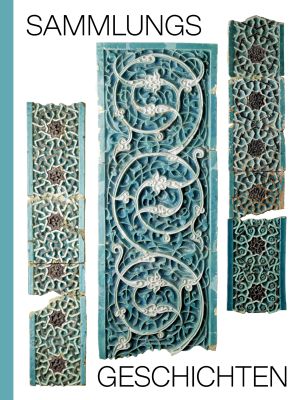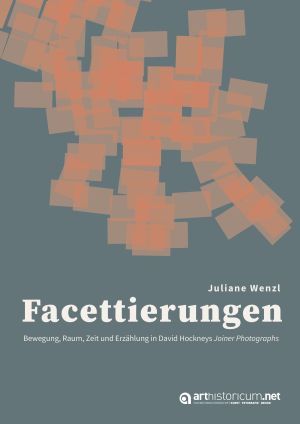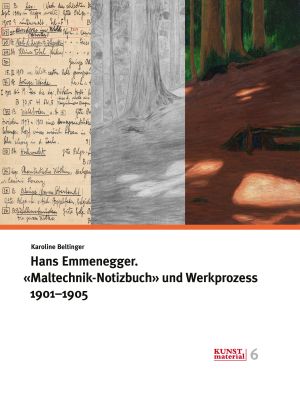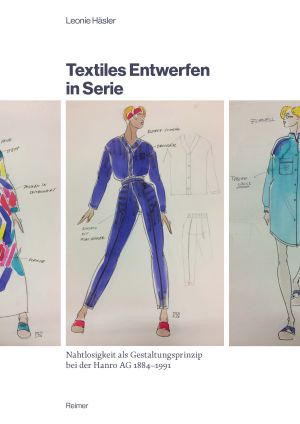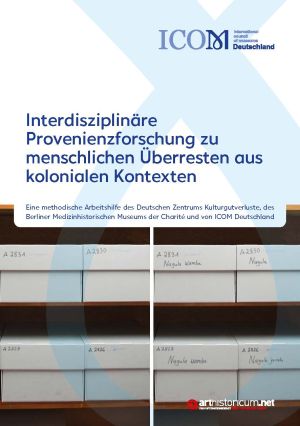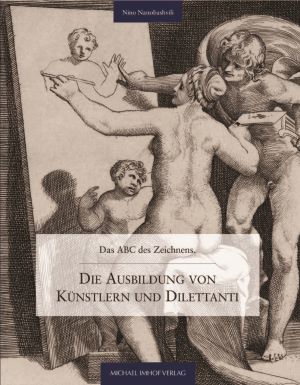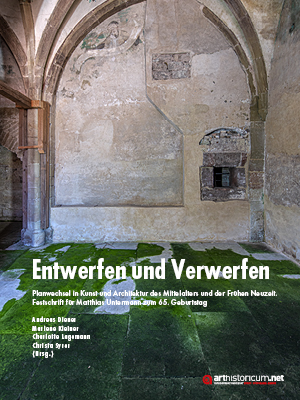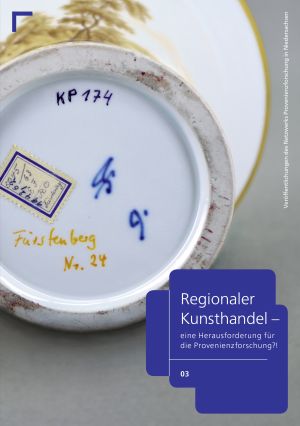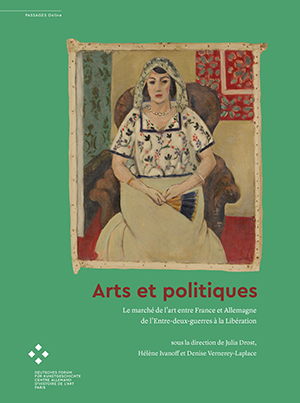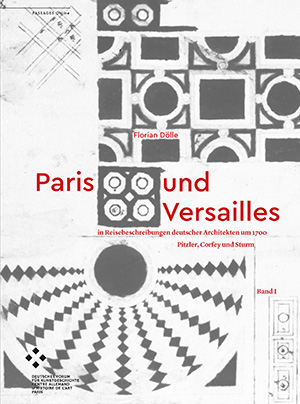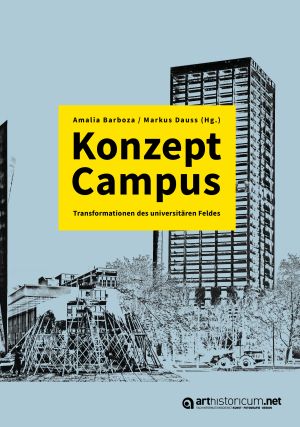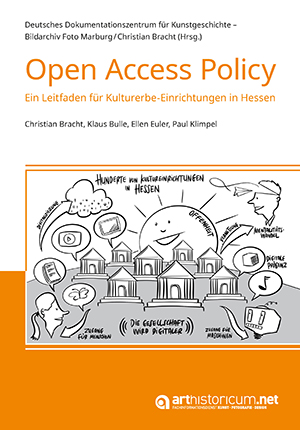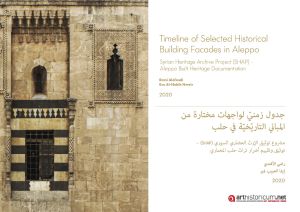Books
4D: Dimensionen | Disziplinen | Digitalität | Daten
20 years ago, prometheus was launched as a distributed digital image archive for art history and image-based disciplines, marking a fundamental step for the digital transformation in the respective subjects. Since then, the contours of a future digitally supported science have become clearer. The Digital Humanities are expanding the methodological field of the humanities, interdisciplinary collaboration to answer research questions is increasingly gaining acceptance, and the establishment of a National Research Data Infrastructure is laying the foundations for a science system in transition.
The 2021 anniversary conference discussed the transformation of the sciences under four perspectives (4D) and deliberately went beyond the subject boundaries of art history.
In this publication, the contributions appear successively. They are edited, have the final layout and are included unchanged in the full volume. Each early-view article receives a persistent DOI and is thus fully citable; only no pages can be given yet. Only when all articles are available will they be given page numbers. Please use the citation recommendation given in the PDF for the Early View. In addition to the e-book (PDF), a print edition will also be published.
Wenn Bilder sprechen: Provenienzforschung zu Max Liebermann und seinem Netzwerk
Thanks to financial support from the German Lost Art Foundation, since 2020 the Liebermann-Villa in Berlin has been able to conduct a provenance research project into its permanent collection, with a particular focus on cultural objects displaced as a result of National Socialist persecution. This volume results from the 2021 conference “Provenance Research, Max Liebermann and his Network. Reports from the Field” staged in collaboration with the Technische Universität Berlin. The book is published on the occasion of the exhibition “When Pictures Speak. Provenance Research in the Collection of the Liebermann-Villa” (Liebermann-Villa am Wannsee, October 2022 to March 2023). The volume explores, among other themes, provenance research into Max Liebermann and his network in archives, on the art market, in museums and in academia.
Kunst und Material. Konzepte, Prozesse, Arbeitsteilungen
Media diversity, an expanded notion of the artwork and a changed understanding of creativity have shaped art since the modern era. This creates new challenges for the reception and preservation of a work as well as for the concept of authorship and the idea of authenticity. The separation of design and implementation in contemporary art also establishes a new form of art production based on the division of labour with manifold implications. The contributions in this volume show that such developments require innovative, interdisciplinary approaches at the interface of the history of technology, conservation science and art history.
Social Media Performance: YouTube und Instagram als Ort künstlerischer Aufführungen
Digital processes have become substantially more important in relation to the production, presentation and reception of art since the digital revolution. The omnipresence of social media in our everyday lives means that the practices of contemporary artists are also shaped by the lifestyles and forms of communication presented online, as well as their specific aesthetics, which they themselves help to shape. Ismene Wyss focuses on artworks with a decided inclusion of social media in the process of artistic creation. It analyses (especially those) contemporary positions that use social media in a performative way: the "social media performance". This book is based on the thesis that the specific performative use of social media is a contemporary artistic strategy that reflects and questions digitalised societies. Based on the artistic positions of Amalia Ulman, Molly Soda, Arvida Bytröm and Leah Schrager, the book analyses how social media have found their way into artistic practice since 2010 and discusses the consequences of such art production for contemporary art history.
Funded by the SNSF (Swiss National Science Foundation)
Das gute Glas. Design digital sammeln und erforschen: Eine designhistorische Betrachtung und Entwicklung einer digitalen Infrastruktur zur Analyse von Trinkgläsern
Under the premise of good form, everyday objects in the post-war period were awarded various design prizes or shown in exhibitions to raise awareness of good design. Drinking glasses from this period are the focus here. What is a good glass? The author explores this question using guidelines written at the time and award-winning glasses. In addition, she lays out the development of the digital tools that were used to research and compare the objects. This includes typification of drinking glasses as well as accurate shape attribution.
This design-historical examination shows what contemporary research on a specific subject area in museums might look like.
Mobil, autonom, vernetzt: Kritik und ökonomische lnnovation in Ephemera der Konzeptkunst, 1966-1975
Between 1966 and 1975 Jan Dibbets, Adrian Piper, Daniel Buren and Eleanor Antin created high-circulation printed advertisements and exhibition announcements. These ephemera - simultaneously works of art, advertising instruments and documentations for artistic actions - are exemplary for the communication-based, flexible and mobile practice of conceptual art.
With a focus on the economic development of the time, the book shows how artists exemplarily anticipated forms of immaterial work. The ephemera are witnesses of a complex relationship between the criticism of hierarchical organizational structures and the demand for authenticity and individuality. In this context, artistic aspirations for autonomy and institutional critique are not in contrast to economic innovation. They are a condition of a postfordist present.
Funded by the SNSF (Swiss National Science Foundation)
Gattungsmischungen – Hybridisierungen – Amalgamierungen: Perspektiven auf das Verhältnis von Traditionen und Novationen in Bild, Text und Musik des Barock
Wie inszenieren Texte, Bilder und musikalische Kompositionen das Verhältnis von ›Altem‹ und ›Neuem‹ in Zeiten, in denen sich mit den Gattungsordnungen auch die ästhetischen Sicherheiten auflösen? Wie setzen sie ›Novationen‹ in anderen diskursiven Ordnungen, etwa religiösen oder gesellschaftlich-politischen, ins Werk und machen damit auch epistemischen Wandel sichtbar? Und wie lassen sich diese Prozesse historisch angemessen beschreiben, ohne auf moderne Fortschritts-teleologien zurückzugreifen?
Diesen Grundfragen der historisch ausgerichteten Literatur-, Kunst- und Musikwissenschaft geht der vorliegende Sammelband nach. Er untersucht mit Schwerpunkt auf dem italienischen 17. Jahrhundert mit Ausblicken auf Shakespeares Sommernachtstraum sowie den englischen Antiquarismus systematische Verschränkungen von Traditionen und Novationen und deren mediale Modellierungen. Im Fokus steht die ›neue‹ Bildsprache der sich naturalistisch inszenierenden, emphatisch mit der Tradition brechenden, de facto aber neue ausbildenden Malweise der Caravaggio-Nachfolge. Im Bereich der Literatur entsteht eine ›neue‹ Dichtungstheorie und -praxis, welche mit einem Autor wie Giovan Battista Marino zwar einerseits ausdrücklich an Regel- und Wertesysteme des Humanismus anschließt, diese aber andererseits im spielerischen Rückbezug auf die Tradition gleichsam in die Leere laufen lässt und durch einen barocken ›Subjektivismus‹ ersetzt. Für die Musik ist die unerhörte Experimentierfreude von Claudio Monteverdi beispielhaft, der in seinen Madrigalen alte und neue Kompositions- und Musizierpraktiken hybridisiert und Third Spaces barocker Polyvalenz eröffnet.
Als überwölbendes Merkmal der barocken Neuerungsphänomene erweist sich das Prinzip der Gattungsmischung. Die Möglichkeiten reichen dabei von Hybridisierungen, in denen das Spannungspotential des Verschiedenen sichtbar ausgestellt wird, bis zu Amalgamierungen, in denen die Differenzqualität der unterschiedlichen Bezugssysteme zugunsten neuer ästhetischer Harmonie bis zur Unkenntlichkeit überspielt wird.
Le monument en débat: Théories et pratiques de la monumentalisation en Allemagne et en Autriche après 1945
There is no doubt that in few European countries has the monument as a medium of memory culture been so acutely and virulently negotiated as in Germany and Austria after 1945. The debates range from the indispensable remembrance of the Shoah to questions about the use of National Socialist and Stalinist remains to the most recent reconstruction projects and are an expression of our ethical as well as political relationship to history. So what do monuments, their design, re-erection or destruction say and how do they shape our future? With the help of various case studies, this conference volume searches for a contemporary concept of monuments beyond its national roots.
Il existe peu de pays en Europe où la question du monument comme medium de la mémoire historique se soit posée de manière aussi aiguë et virulente qu’en Allemagne et en Autriche après 1945. Expressions de notre rapport éthique et politique à l’histoire, les débats interrogent la nécessité de la mémoire de la Shoah, l’usage possible des résidus encombrants du national-socialisme et du stalinisme ou encore de récents projets de reconstruction. Qu’est-ce qu’un monument « dit » ou « ne dit pas », et en quoi sa création, sa modification ou sa destruction engagent-elles notre avenir ? Les études de cas allemands et autrichiens rassemblées ici tentent une définition actuelle du monument, au-delà de son enracinement national.
Sammlungsgeschichten: Islamische Kunst im Museum für Kunst und Gewerbe Hamburg (1873–1915)
Collection Histories. Islamic Art at the Museum für Kunst und Gewerbe Hamburg (1873–1915) looks at the paths taken by works from West and Central Asia into the museum. Eleven studies illuminate the interests of the MK&G founding director Justus Brinckmann, trace his acquisitions, and look at the biographies of individual objects – including a Quran manuscript or tiles from a mausoleum in Bukhara. The focus lies on the relations of local and global networks with the history of the art market.
Facettierungen: Bewegung, Raum, Zeit und Erzählung in David Hockneys Joiner Photographs
David Hockney's joiner photographs are images between single image and sequence, which in their interplay create a spatial and temporal impression of what is to be seen. The picture ensembles are at the same time monoscenic and polychronic, they show spatiotemporal breaks and let relations turn unstable. Individual photographs are thus combined into complex pictorial structures that open up new semantic fields and invite narrativization. The author reads the joiners with Deleuze's theories of the movement-image and time-image and discusses the extent to which narrative is inherent in them.
Licht ins Dunkel: Wohin entwickelt sich die künstlerische Fotografie?
This volume brings together the contributions to the symposium of the same name hosted by the DZ BANK Art Collection, now the DZ BANK Art Foundation, on October 8 and 9, 2020. Artists, curators, and scholars from the fields of art and cultural studies as well as philosophy address the question of the future of photographic forms of expression. In their essays, they illuminate from different perspectives current trends that inhabit the taut relationship between the immateriality of the digital image and a recurring emphasis on materiality/substantiality. In the process, conceptual issues such as the dissolution of traditional genre boundaries are also explored.
Hans Emmenegger. «Maltechnik-Notizbuch» und Werkprozess 1901–1905
With the aim of further developing his painting technique and improving the durability of his paintings, the Swiss painter Hans Emmenegger (1866-1940) meticulously documented his working processes, materials and techniques between 1901 and 1905. His ‘painting technique notebook’ was evaluated at the Swiss Institute of Art Research in Zurich and linked to the results of technological painting analyses. This volume presents the results of this research. Emmenegger's search for subjects, the function of studies, the painting process, his struggle for pictorial colour, his technical experiments and much more are explained.
Textiles Entwerfen in Serie: Nahtlosigkeit als Gestaltungsprinzip bei der Hanro AG 1884–1991
The former Swiss textile factory “Hanro” produced knitted fabrics, underwear and outerwear in the 20th century. Seamlessness as a concrete textile technique as well as a design ideal was an important factor within the internal production processes. The author examines the textile design process in the context of changing fashion cycles and serial production. She provides new insights into the conditions of emergence of today’s globalized industry.
Funded by the SNSF (Swiss National Science Foundation)
Interdisziplinäre Provenienzforschung zu menschlichen Überresten aus kolonialen Kontexten: Eine methodische Arbeitshilfe des Deutschen Zentrums Kulturgutverluste, des Berliner Medizinhistorischen Museums der Charité und von ICOM Deutschland
The guidelines offer a practical introduction into provenance research on human remains from colonial contexts. Though focussed on German institutions, they also give a glance at the situation in Austria. They apply to collections of human remains kept in universities and museums, mostly in the fields of anthropology, anatomy and medical history. The interdisciplinary approach combines several research methods. The guidelines provide extensive guidance for historical, anthropological and natural sciences methods of provenance research. They also explain the cross-cultural and transnational dimensions of provenance research and discuss how to document the results of the research.
Die Ausbildung von Künstlern und Dilettanti: Das ABC des Zeichnens
In the early modern period drawing was one of the main working practices of artists. Since the 16th century more and more dilettanti showed interest for learn drawing. For the first time Nanobashvili opposes learning techniques of artists and dilettanti, by which she can shed new light on drawing practices and theoretical questions. This approach allows a new understanding of Alessandro Alloris Ragionamenti delle regole del disegno, the Carracci-academy in Bologna, as well as the life drawing by examining an informal circle of venetian artist Filippo Esengren.
LIDO-Handbuch für die Erfassung und Publikation von Metadaten zu kulturellen Objekten: Band 2: Malerei und Skulptur
Volume 2 of the LIDO Handbook is dedicated to painting and sculpture. It describes a specific application profile of the internationally established metadata standard LIDO (Lightweight Information Describing Objects) and serves as a guide for the coherent structuring of information in local collection management systems. Each data field contains a definition, tips for data entry, examples as well as instructions for exporting data based on the LIDO XML schema. All recommendations support the objective of preparing data from different sources in ways that enable comprehensive and precise search results and open opportunities for further cross-linking and integration of information.
Entwerfen und Verwerfen: Planwechsel in Kunst und Architektur des Mittelalters und der Frühen Neuzeit. Festschrift für Matthias Untermann zum 65. Geburtstag
With his multifaceted work as an art historian, medieval and building archaeologist, Matthias Untermann has made a particular contribution to the study of medieval architecture and its semantics. Not only the objects of his research are frequently characterized by changes of plans, but also his own career: In 2000, Matthias Untermann became a professor of art history at Heidelberg University after having worked as a monument conservator for 15 years. For his 65th birthday, friends, colleagues and companions honour him with this collection of 55 essays, which reflect this change of plans by means of interdisciplinary collaboration.
Regionaler Kunsthandel: Eine Herausforderung für die Provenienzforschung?
The conference proceedings outline the contributions presented at the online conference of the same name organised by the Bomann Museum in Celle and held on 1 March 2021. Locating sources for provenance research into the regional art trade is often difficult as business records or auction and sales catalogues have not been preserved in most cases. Therefore the central question at the conference was how to achieve the best possible provenance research nevertheless. Individual contributions provide examples from various museums and research projects in northern Germany how this can be accomplished.
Arts et politiques: Le marché de l'art entre France et Allemagne de l'Entre-deux-guerres à la Libération
Art and Politics between Germany and France from the interwar period to 1945. Sixteen case studies on the actors of the artmarket; an original view of networks, of the artists‘ careers and collections, of transnational relationships between Arts and Politics in the XXth century.
Qui sont les acteurs du marché de l’art entre la France et l’Allemagne ? Quelle lecture politique peut-on faire de l’histoire des collections ? Alors que le début des années 1920 témoigne, après la rupture de la guerre, d’une reprise dynamique des échanges entre les deux États, ces derniers furent modifiés par l’instauration du nazisme à partir de 1933, puis l’Occupation de la France. À partir d’études de cas concernant des institutions culturelles, des réseaux marchands, ainsi que des parcours et collections d’artistes, les 15 contributions de cet ouvrage se consacrent aux réseaux transnationaux du marché de l’art de l’Entre-deux-guerres aux années suivant la Libération. Elles donnent à voir les enjeux et les implications politiques des transactions commerciales relatives aux œuvres d’art, mettant en lumière la complexité des rapports, encore largement inédits à ce jour, entre arts et politiques.
Paris und Versailles in Reisebeschreibungen deutscher Architekten um 1700: Pitzler, Corfey und Sturm
This study examines the reception of architecture in travel descriptions of three German-speaking architects on Paris and Versailles around 1700: Christoph Pitzler, Lambert Friedrich Corfey and Leonhard Christoph Sturm. For this purpose, a new quantitative-qualitative method was applied in art historical source analysis, which focuses on the identification of the contents mentioned, the architects' approach to the description and the sources used for it. The extensive data collection and interpretation provide numerous new results on the reception of architecture in the parts of France that have hardly been studied so far, as well as on the genesis of the travelogues.
Cette étude examine la réception de l'architecture dans les descriptions de voyage de trois architectes germanophones sur Paris et Versailles autour de 1700 : Christoph Pitzler, Lambert Friedrich Corfey et Leonhard Christoph Sturm. À cette fin, une méthode quantitative-qualitative, nouvelle dans l'analyse des sources de l'histoire de l'art, a été appliquée, qui se concentre sur la détermination des contenus mentionnés, l'approche des architectes à la description et les sources utilisées pour celle-ci. La collecte et l'interprétation approfondies des données fournissent de nombreux résultats nouveaux sur la réception de l'architecture dans les sections françaises qui n'ont guère été abordées jusqu'à présent, ainsi que sur la genèse des carnets de voyage.
Related research data on arthistoricum.net@heiDATA
Konzept Campus: Transformationen des universitären Feldes
The spaces in which academic research and teaching take place are often considered a minor matter. For the most part, they only receive attention when drastic changes are made. It then becomes clear that the campus has always offered space for very different designs.he contributions in this volume address historical and contemporary transformations of the campus. Distinctive architectural examples from Germany, but also from the Anglo-Saxon and French contexts are discussed. Political programs, ideological charges and critical perceptions of modern university spaces are made visible. The medial dimension of the built environment is also discussed. What is the role of artistic research and intervention in this? Can they uncover, subvert or even break the dominant logics of the campus and thus open it up for new appropriations?
Open Access Policy: Ein Leitfaden für Kulturerbe-Einrichtungen in Hessen
Cultural institutions hold extensive cultural assets that have universal and timeless value. Digitisation simplifies access and expands and multiplies the usability of the cultural treasure managed by these institutions. However, open access is often severely hampered by legal, technical, or financial constraints.
Therefore, in 2021, the most important cultural heritage institutions in the state of Hesse committed to a joint Open Access Policy. This guide explains the policy and gives people working in cultural heritage institutions – not only in Hesse – practical advice on how to implement it.
Der Prager Georg im Germanischen Nationalmuseum: Virtuelle 3D-Rekonstruktion – kunsttechnologische Untersuchung – kulturhistorische Einordnung
The meeting of art historians paying a visit to the sculpture of St. Georg on the Exhibition on the Art of the Luxemburger 1979 in Cologne did not enhance further scientific observations in terms of cultural history or art technology. Hence, the historical context of the sculpture’s singularity has remained unquestioned. The polychromy’s virtual reconstruction ends in a survey on both the cultural history and art technology, revealing along with the history on applications on painted figures up to 1400 strong ties to goldsmithing and panel painting in North Italy.
Timeline of Selected Historical Building Facades in Aleppo: Syrian Heritage Archive Project (SHAP) – Aleppo Built Heritage Documentation
This “Timeline of Selected Historical Building Facades in Aleppo” highlights primarily exterior facades with a particular focus on doors and windows from the Seljuk period to modern times. The elements are chosen from 60 historical buildings including religious, commercial and residential buildings. The focus is on the presentation of a general chronological sequence. All pictures are selected from the collections of the Syrian Heritage Archive Project (SHAP). Many of these monuments were affected, damaged or destroyed, by the conflict in Syria, the clashes of which lasted in Aleppo from 2012 to 2016; reconstruction work is ongoing. Thus, it seems particularly important to recall and document the diversity and richness of detail in the city’s built heritage, which give testimony to the traditional skills and competence of the builders, architects and craftsmen and which contribute to Aleppo's local identity and its position as a distinguished and beautiful city.
In Italien Karriere machen: Der flämische Maler Michele Desubleo zwischen Rom, Bologna und Venedig (ca. 1624-1664)
The Flemish painter Michele Desubleo (* 1601, Maubeuge; † 1676, Parma) had a successful career in Italy. In Rome, Bologna and Venice, he established contacts with some of the most renowned painters and art collectors of his time and secured honourable commissions. He thus represents a special case of an immigrant painter. However, the artistic recognition he received during his lifetime could not prevent Desubleo’s name from rapidly disappearing from art historical literature after his death.
This monograph explores for the first time the complex mechanisms that led to the success and oblivion of a foreign painter in 17th century Italy. The study reveals the multi-faceted picture of a gifted artist and traces his unusual rise far from official career paths.



